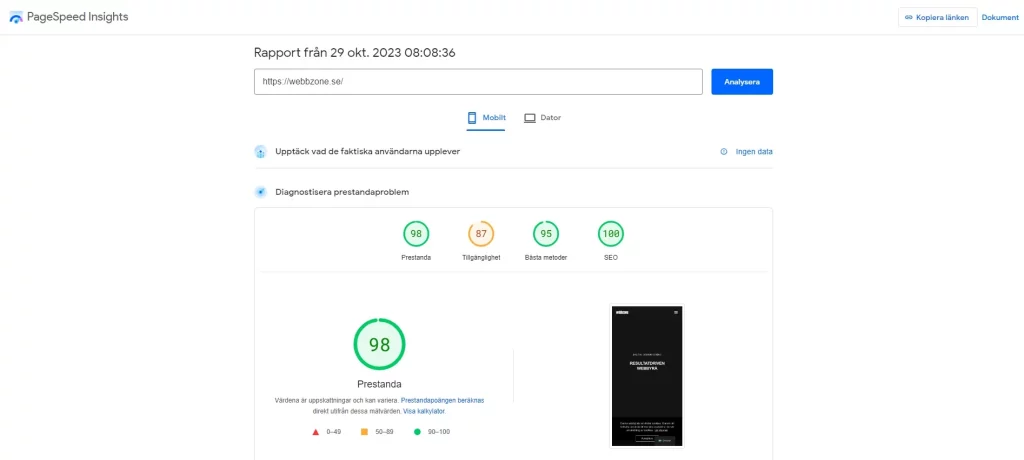On-Page SEO is a crucial component of creating a successful website. It involves optimising each page to improve visibility in search engines like Google, which in turn leads to increased traffic and better user experience. By tweaking key on-page elements, both website owners and SEO experts can improve rankings and conversion rates.
What is On-Page SEO?
On-Page SEO means optimising both content and HTML structure to make pages more accessible to search engines and users. This includes text, images, meta-tag, URL structure and more. Applying these methods ensures that search engines like Google can easily interpret and rank the page, resulting in higher visibility and better user engagement.
Why is On-Page SEO Important?
Google uses advanced algorithms to assess a page's relevance A well-optimised site with high user-friendliness and fast loading time has a better chance of ranking higher in search results. This increases the likelihood of generating more traffic and achieving better conversions. According to Backlinko are pages that are optimised for SEO and user intent more likely to achieve higher rankings.
Basic Principles of On-Page SEO
| Element | Description |
|---|---|
| Title Tags | Unique and informative titles with primary keywords that reflect the page content. |
| Content optimisation | Relevant, high-quality and valuable content that answers users' questions. |
| Internal linking | Guides visitors through the website and improves SEO by strengthening the authority of the page. |
| URL structure | SEO-friendly, logical and concise URL structure that improves user experience. |
Title Tags
The title tag is the first thing both users and search engines see. It should contain your primary keyword and clearly describe the page content. It is important that each page has a unique and optimised title tag. Example:
"On-Page SEO: Optimise Your Website for Higher Rankings and More Traffic"
Content optimisation
Creating relevant and engaging content is key. The text should not only be informative but also structured in a way that makes it easy to read and engaging. Answers to user questions should be delivered early in the text. Use headings as H2 and H3 to create a clear hierarchy and integrate your keyword in a natural way.
Internal linking and URL structure
Internal linking helps users navigate your website while improving SEO. Use descriptive anchor texts to link to relevant pages and keep your URLs short and informative. A good URL is:
dindomän.se/on-page-seo-guide
Advanced On-Page SEO methods
To really compete in search results, it takes more than just basic SEO. Here are some advanced methods:
| Element | Description |
|---|---|
| Scanning sieve | Customise content according to the user's search intent to increase relevance and ranking. |
| User experience (UX) | Fast page speed and mobile-friendliness increase engagement and improve SEO. |
| CTR and Dwell Time | Optimising meta descriptions and title tags to increase click-through rates and time on page. |
Search Intent
Understand what users are searching for and create content that matches their intent. Whether the user wants a quick guide or a detailed walkthrough, it's important to deliver what they expect. This increases the chances of the page ranking higher for relevant search queries.
User experience and page speed
Google evaluates user experience high. A quick page that is mobile-optimised and easy to navigate not only leads to better SEO but also higher conversion rates. Use tools like Google PageSpeed Insights to analyse and optimise loading times.

Click-through rate (CTR) and Dwell Time
By writing engaging meta descriptions and title tags, you increase the chances of more people clicking on your page in search results. When visitors spend more time on the page (high Dwell Time) also improves the page's ranking.
Checklist for On-Page SEO
| Action | Description |
|---|---|
| Keyword analysis | Identify relevant keywords that the target audience is searching for. |
| Title tags | Write unique and SEO-optimised titles with primary keywords. |
| Meta descriptions | Create engaging descriptions to increase CTR. |
| Headings (H1, H2, H3) | Use keywords in headings to structure the content logically. |
| Content optimisation | Make sure the content is informative, accurate and engaging. |
| Images and Multimedia | Optimise images with alt texts and reduce file sizes for faster loading. |
| Internal linking | Link between relevant pages with descriptive anchor texts. |
| Mobile optimisation | Make sure the site is mobile-friendly and responsive. |
| Page speed | Optimise loading times with Google PageSpeed Insights. |
Tools for On-Page SEO
To succeed with On-Page SEO, you can use the following tools:
- Google Analytics: Track and analyse website traffic.
- Google Search Console: Manage and optimise your presence in Google Search.
- Rank Math: A powerful WordPress plugin for SEO.
- Ahrefs: A tool to analyse links and SEO performance.
Measuring the results of On-Page SEO
After implementing your SEO strategy, it is important to measure the results. Some key metrics to keep track of are:
| Measurement value | Description |
|---|---|
| Organic Traffic | The number of visitors coming via organic search results. |
| Keyword ranking | The position your keywords have in the search results. |
| Click through rate (CTR) | Percentage of users clicking on your website in search results. |
| Dwell Time | The time users spend on your website after clicking. |
| Bounce Rate | Percentage of users who leave the page without further interaction. |
Continuous Optimisation
SEO is an ongoing process. To maintain and improve your rankings, you need to do it regularly:
- Evaluate website performance and identify areas for improvement.
- Test changes and analyse what works best through A/B tester.
- Leather of the results and adapt your strategy.
With a continuous optimisation process, you can ensure that your website remains competitive in search results and that you constantly improve both visibility and user experience.
On-Page SEO is a cornerstone of building a successful website. It involves fine-tuning each individual page to climb the search results and attract more visitor traffic. By modifying various components of the page, website owners, SEO experts and digital marketing strategists can enhance the user's experience while improving the site's ranking and visibility in Google searches.
Don't miss the previous parts of our SEO guide
- HOW SEARCH ENGINES WORK: A GUIDE FOR BEGINNERS - PART 1
- SEO BASICS: A GUIDE FOR BEGINNERS - PART 2
- HOW TO DO A KEYWORD ANALYSIS: A GUIDE FOR BEGINNERS - PART 3
- ALL ABOUT SEO: A GUIDE FOR BEGINNERS


